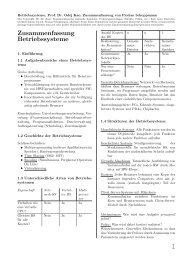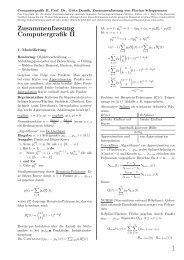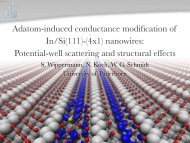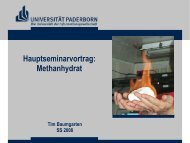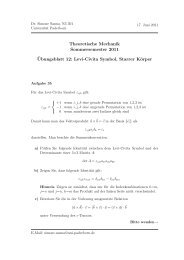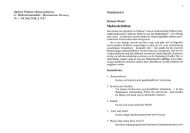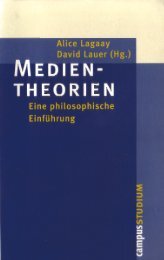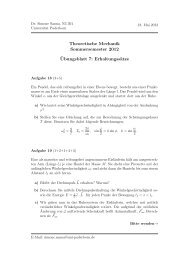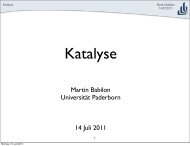Skript / lecture notes - Universität Paderborn
Skript / lecture notes - Universität Paderborn
Skript / lecture notes - Universität Paderborn
Erfolgreiche ePaper selbst erstellen
Machen Sie aus Ihren PDF Publikationen ein blätterbares Flipbook mit unserer einzigartigen Google optimierten e-Paper Software.
Prof. Dr. Wolf Gero Schmidt<br />
<strong>Universität</strong> <strong>Paderborn</strong>, Lehrstuhl für Theoretische Physik<br />
Bemerkungen remarks<br />
w lm = 2π<br />
2 |A ml| 2 δ(ω ml − ω) (1.81)<br />
”Fermi’s Goldene Regel” ”Fermi’s golden rule”<br />
– Energieerhaltung durch δ–Funktion δ function ensures energy conservation<br />
– Übergangsrate ∼ |Übergangsmatrixelement| 2 transition rate ∼ |matrix<br />
element| 2 of the perturbation between the final and initial states<br />
– Although named after Fermi, most of the work leading to the Golden Rule<br />
was done by Dirac, who formulated an almost identical equation, including<br />
the three components of a constant, the matrix element of the perturbation<br />
and an energy difference. It is given its name because, being such a useful<br />
relation, Fermi himself called it ”Golden Rule”.<br />
1.3 Das Wasserstoffmolekülion<br />
The hydrogen molecule ion<br />
Einfachste chemische Verbindung H 2<br />
+ The hydrogen molecule ion consists of an electron<br />
orbiting about two protons, and is the simplest imaginable molecule. Let us investigate<br />
whether or not this molecule possesses a bound state: i.e., whether or not it possesses a<br />
ground-state whose energy is less than that of a hydrogen atom and a free proton.<br />
e -<br />
+<br />
A<br />
x<br />
+<br />
B<br />
R A<br />
RB<br />
Potentialschema schematic potential<br />
V<br />
R A<br />
R B<br />
x<br />
16




